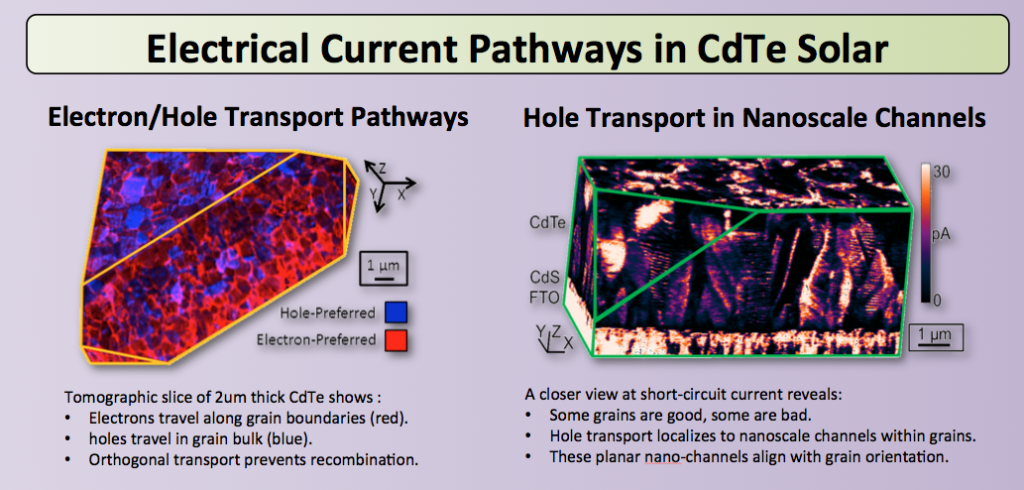Justin Luria’s Stellar Solar Cells Win MRS Best Poster
By Allison McLellan
 Justin Luria, a visiting researcher working in the lab of Dr. Bryan Huey, was recognized with a Best Poster Award at the annual meeting of the Materials Research Society (MRS) for his work entitled “Conductive Tomography of CdTe Reveals Nanoscale Current Pathways.”
Justin Luria, a visiting researcher working in the lab of Dr. Bryan Huey, was recognized with a Best Poster Award at the annual meeting of the Materials Research Society (MRS) for his work entitled “Conductive Tomography of CdTe Reveals Nanoscale Current Pathways.”
Held from November 29th– December 4th in Boston, Massachussetts, the MRS meeting is the preeminent annual event for those in the field of materials research, featuring over 50 symposia and attended by as many as 7,000 researchers from across the globe. The organization focuses on broadening the impact of materials science and improving the quality of life. An integral part of MRS meetings, poster sessions allow authors to share their research with others; this year’s fierce competition included about 600 participants. Meeting chairs select the winners on the basis of the poster’s appearance, technical content, and presentation quality.
Cadium Telluride (CdTe) solar cells, featured in Justin’s poster, are a mature, low-cost technology with a multi-billion dollar annual market. Primarily funded through the DOE EERE Sunshot Program and DOE’s ESPM program in Basic Energy Sciences, research was conducted with Dr. Yasemin Kutes, a recent Ph.D. graduate in materials science, in the laboratory of Professor Bryan Huey.
UConn’s facilities have provided Justin with an extremely positive experience. “Dr. Huey’s lab has some of the finest scanning probe equipment in the United States. I’m actively engaged in meaningful research, collaborating with researchers all over the country. Dr. Huey has been instrumental in the support of my DOE Sunshot research grant, with sagacious feedback on forward thinking research goals.”
Despite being a billion dollar industry, the study of electrical current generation and aging has many questions to explore. Justin and Dr. Kutes’ research utilizes novel microscopy techniques to 3D image photocurrent in a solar cell. This creates an image similar to a CAT scan at a hospital, but on a portion of a photovoltaic about the size of a red blood cell. The new method allows the scientists to discover nano-scale current pathways in CdTe thin film that actually correspond to interconnected defects in the material. With this knowledge about the synthetic process, there can be future improvements in device creation.
Justin was very grateful to have the distinction of a MRS Best Poster Award. “This is a huge opportunity for our work to gain national attention, furthering the exchange of ideas. My hope is that others can utilize this technique to answer some of the large looming questions in materials science.”
Published: December 21, 2015
Categories: conferences, news, student chapter, undergraduate students
Available Archives